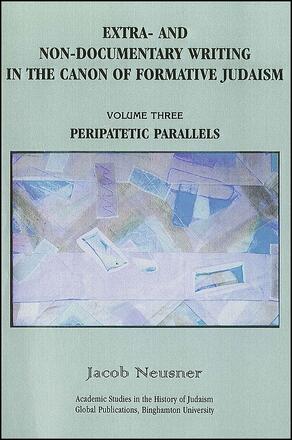
Extra- and Non-Documentary Writing in the Canon of Formative Judaism, Vol. 3
Peripatetic Parallels
Explores the canon of Rabbinic literature.
Description
Rabbinic literature in its formative age, from the Mishnah through the Bavli, ca. 100–600 c. e., is comprised by documents that relate to one another in three ways. First, they are autonomous and self-contained; second, they are connected with one another; and third, they are continuous with one another. Some point to the connections, in the form of parallel versions of sayings or stories, as evidence against the theory that the documents possess integrity.
Volume Three reprises Neusner's The Peripatetic Saying: The Problem of the Thrice-Told-Tale in Talmudic Literature (Chico, 1985; Scholars Press for Brown Judaic Studies). It responds to critics of the documentary reading of the canonical documents of Rabbinic Judaism in the formative age who make much of the variations in manuscript readings of sayings and stories. These variations are so different from one another that, so the critics maintain, they call into question the very conception of a document. Each manuscript (let alone each compilation) has its own representation of a given compilation; there are no determinate documents. That is because the documentary program of rhetoric, topic, and logic of coherent discourse makes no impact on sayings or stories that circulate beyond the limits of any one document. All we have are diverse versions of we-know-not what. For the sample covered in these pages, claims that parallels move from document to document vastly exaggerate the range of variation. The variant readings are paltry and pointless, just like the parallels to which Volumes One and Two are devoted.